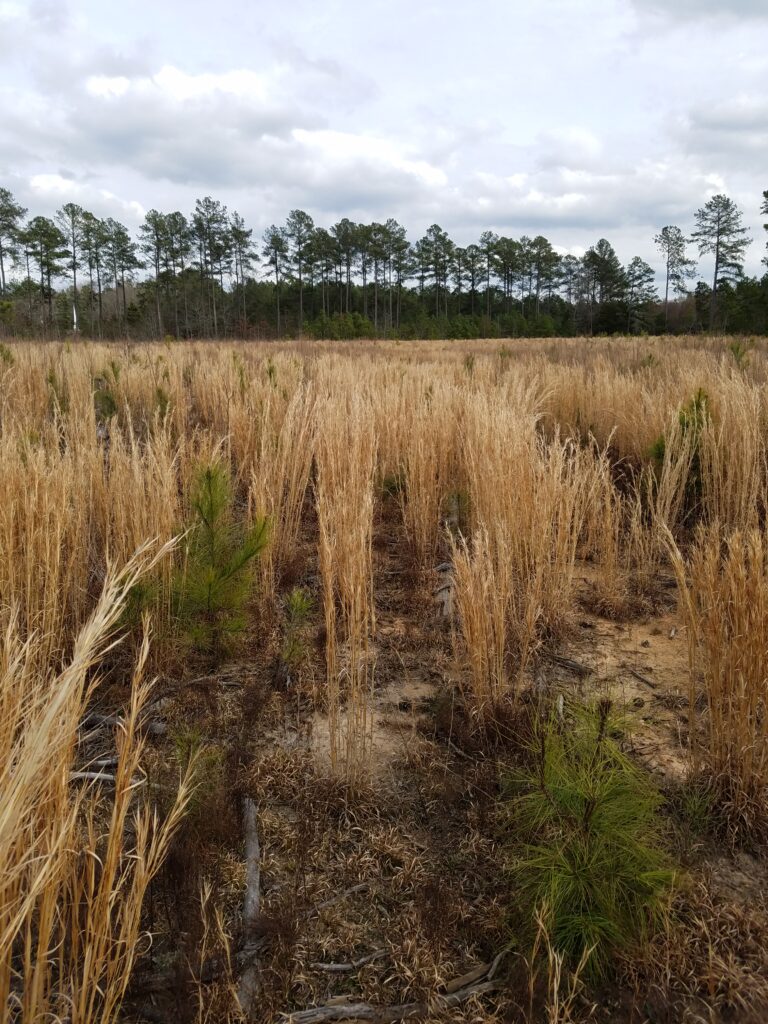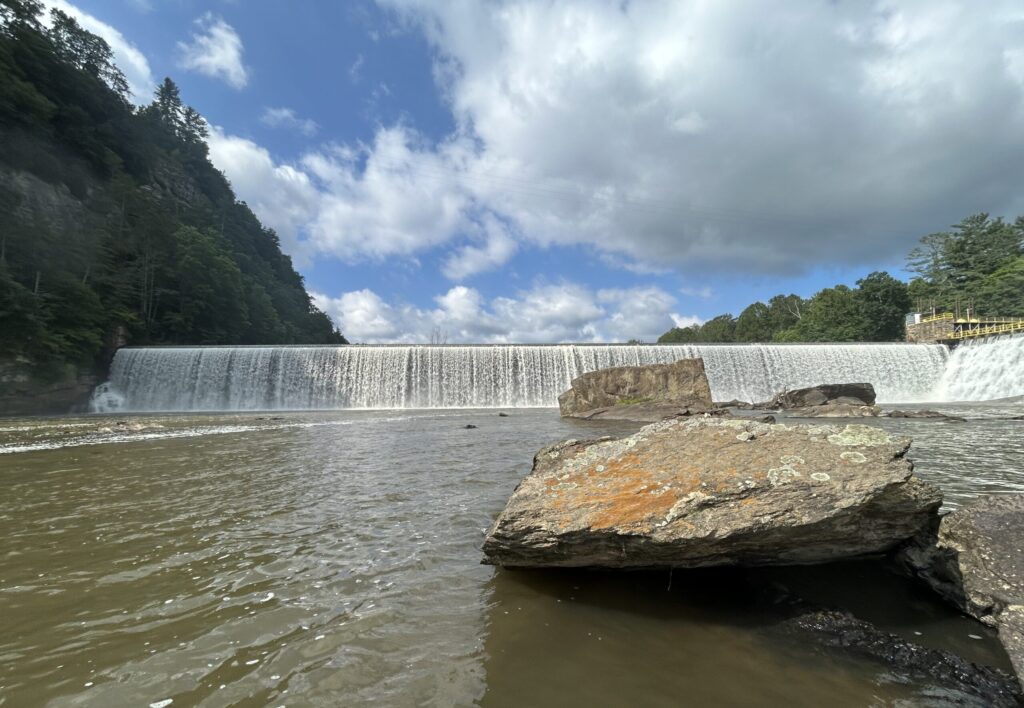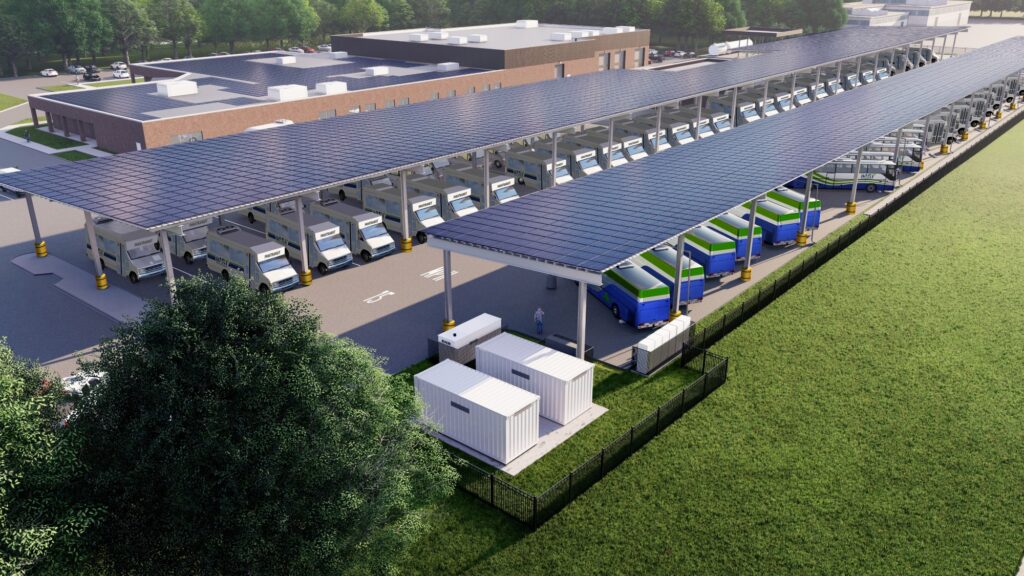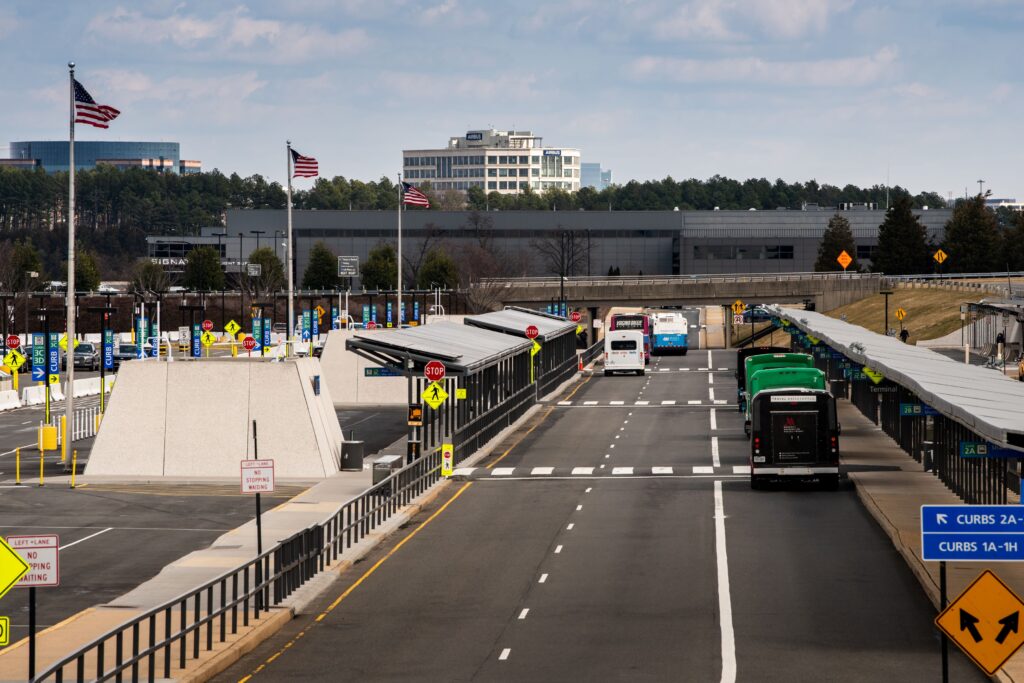Renewable Energy
As the world shifts its attention to alternative energy sources, solar, wind, and other forms of renewables will play a vital part. Harnessing the power of the sun, wind, and the core of the earth has proven to be an effective means to provide clean energy from renewable resources and without harmful emissions. JMT has been involved in the design, planning, and construction of various renewable energy systems. These innovative clean energy sources help to sustainably meet our clients’ energy needs while simultaneously satisfying clean energy and efficiency standards.


Echoes of the Past: Farmstead and Cemetery Unearthed in Solar Project
JMT conducted this project at the request of the Office of State Archaeology (OSA) on behalf of Carolina Solar II, LLC (Carolina Solar) in advance of their intention to develop the 500-acre property. As part of this project, the remains of a historic farmstead were surveyed.
Location: Middlesex County, Virginia
Client: Hawtree Creek Solar Farm
Potential effects to this site were evaluated in the context of the NRHP, which recommended the avoidance of two resources: the remains of a nineteenth century farmstead and an abandoned African American cemetery. JMT worked in coordination with the Carolina Solar and the OSA to ensure the successful avoidance of these resources. This project was conducted at the request of Carolina Solar LLC in advance of their intention to develop the property. The survey was conducted to ensure that resources eligible for or listed in the National Register of Historic Places located within the Area of Potential Effect (APE) are not adversely affected by the proposed project. This work is being done at the direct request of the North Carolina Office of State Archaeology.
Archaeology testing of the proposed project area was performed to determine the presence of any historic or prehistoric archaeology sites, isolated finds, or features. The testing strategy for the Phase I Archaeology Survey of the project area was determined by the archival research, field observations, and a consideration of the solar array design plans for the project and included high-probability and low-probability testing areas. Survey was accomplished by the systematic and judgmental investigation of approximately 520 acres. Visual inspection and shovel testing were used throughout the project area, and systematic metal detection sampling was used to assist in the delineation of a newly-identified 19th home site. Thirteen previously unrecorded sites and resources were identified, including an African American cemetery, with occupations ranging from the Middle Archaic through the early 20th century.
Harnessing Hydropower: JMT’s Key Role in FERC Compliance
JMT’s engineering and field services supported FERC (Federal Energy Regulatory Commission) permitting compliance.
Location: Various Locations, South Carolina
Client: Lockhart Power
Hydroelectric power is a renewable energy that plays an important role in the nation’s energy mix by using the power of moving water to generate electricity. For three hydroelectric power projects in South Carolina, JMT supported the regulatory and compliance activities related to environmental resources to the Federal Energy Regulatory Commission (FERC).
JMT provided natural resource and regulatory expertise for projects owned or operated by Lockhart Power. Activities included a revised recreation plan for the 1.1 MW Pacolet hydroelectric project, coupled with a survey of the project area, identification of invasive plant species, and preparation of associated compliance reporting with regulatory agencies. Next, we provided monitoring for a migratory fish passage at a fish ladder constructed in the 9 MW Columbia hydroelectric project and provided associated compliance reporting to regulatory agencies. Lastly, at the Lockhart hydroelectric project, we conducted streamflow measurements downstream to verify minimum downstream flow releases. JMT facilitated meetings, prepared, and submitted administrative records demonstrating agency consultation and concurrence on compliance activities.


From Farm to Fuel: Dairy Farms’ Sustainable Energy Breakthrough
JMT provided site planning, design and permitting required to construct a new renewable gas facility on an existing dairy farm.
Location: Phelps and Arcadia, NY
Client: Owner – UGI Energy Services, LLC
The environmental and economic benefits of anaerobic digestion of dairy manure include producing renewable energy and reducing greenhouse gas emissions. Dairy manure represents the nation’s largest source of methane from livestock manure management. Our energy client teamed with a New York dairy farm to construct a renewable natural gas (RNG) facility. The farm is a multi-family partnership that cares for 2,000 milking cows and grows feed for their herd locally. The client’s commitment to caring for people, animals, and land in a sustainable way made the location for this unique RNG facility essential. This facility is expected to produce 55 million cubic feet of RNG annually that is being delivered to a local national gas pipeline serving the regional distribution system.
JMT provided services including:
- Site/Civil Design
- Stormwater Management Design
- State, Municipal, and Local Permitting
- Air Quality Registration
- Surveys & SUE
- Geotechnical
- Wetland Delineation
- State Environmental Quality Review Act (SEQR) environmental support
From Shore to Core: JMT’s Capabilities Drive Goose Creek’s Subsea Cable Transformation
JMT provided environmental, engineering, and design services to industrialize the land cable factory to a submarine cable factory, the only high-voltage subsea cable plant in the U.S.
Location: Goose Creek, SC
Client: Nexans High Voltage USA, Inc.
JMT provided environmental, engineering, and design services for the expansion of this existing factory to meet the requirements for the manufacturing and routine testing of submarine and land cables. This required several preparations to the Cooper River site to give safe and efficient access to the plant for large cable transport and installation vessels, as well as the construction of a plant marine terminal/quay to allow safe mooring of vessels and handling of the products and equipment during vessel loading.
JMT provided environmental permitting activities to support dredging more than 10 acres of river bottom, including pursuing Clean Water Act Section 404 and 401 authorizations. Work components included preparation of the uplands adjacent to the quay as well as construction of the main quay in the Cooper River along with associated dredging. Additional evaluations included a biological assessment, an alternatives analysis, sediment characterization, a Tier 1 sediment analysis, an underwater noise evaluation, an analysis of project effects pursuant to 33 U.S.C. Section 408, and an Essential Fish Habitat Assessment. Section 408 coordination entailed establishing another salinity monitoring gauge in the Cooper River to demonstrate that an existing one would not be adversely affected by this project’s dredging. JMT also provided project management and engineering services required to ensure cable transport and installation vessels’ access to the plant, including the preparation for the necessary marine terminal facilities.
Nexans proudly opened its Charleston site as the only high-voltage subsea cable plant in the U.S.


Empowering Sustainable Transit: JMT’s Role in Dover’s Solar Canopy and EV Charging
JMT provided engineering and design support services along with mechanical and electrical engineering for a new, free-standing photovoltaic canopy system with EVCS charging.
Location: Dover, DE
Client: Owner – Delaware Department of Transportation
The Delaware Transit Corporation received a $2.5 million federal grant to install solar panels at a bus parking facility in Dover. This initiative is focused on energy efficiency (fleet vehicle fuel use) and energy usage, which are directly related to energy consumption at DTC facilities. To support this initiative, JMT supported DTC by successfully authoring an FTA grant for a comprehensive renewable energy program for the Dover facility. The FTA grant and project included a multi-phased engineering/architectural approach to analyze, design, and construct a solar canopy over the current bus parking generating solar energy during the day that is stored in a battery storage system located onsite to charge the electric buses each night.
The project included:
- 2,240 solar panels (965 KW solar array) covering 63,000 SF of a watertight canopy
- Two– 1.1 MWh batteries creating the battery energy storage system
- Smart energy control center (ECC) allows DTC to remotely charge buses from the battery or utility provider
- Ecostruxture micro-grid controls allow remote monitoring of the microgrid system
- Transit security connections
- LED under canopy lighting
Sun-Powered Shelters and Smooth Travels: Dulles Airport’s Latest Upgrades
Commercial curb third lane expansion and terminal roadway improvements, canopies, and solar photovoltaic system.
Location: Dulles, VA
Client: Owner – Metropolitan Washington Airports Authority
JMT designed two new 250 ft long canopy structures to provide weather protection for disembarking passengers at a new commercial curb lane at Washington Dulles International Airport. As part of the design, JMT provided field topographic surveys, utility designating and locating, civil engineering design of a new raised curb median and sidewalk, structural engineering, and detailing of custom canopies that were intended to match the existing canopies on the adjacent curb.
JMT also performed the electrical engineering for the project, which included the design of new LED lighting and one photovoltaic (PV) system for each canopy structure. Each PV system consisted of 4 kW solar panels connected to a 10 kW maximum inverter. The PV system tied directly into the airport’s 480/277V electrical distribution system. The system complied with the rapid shutdown requirement of NEC 2017. Any excess power developed by the PV panels was returned to the airport’s electrical power distribution system instead of local battery storage.


From Waste to Watts: JMT’s Sustainable Support for Align RNG’s Methane Pipeline in Eastern NC
JMT provided support services for advancing renewable energy with Align RNG in Eastern North Carolina.
Location: Bladen County, NC
Client: Roeslein & Associates, Inc.
Smithfield Foods and Dominion Energy have joined forces to create Align Renewable Natural Gas (RNG), a joint venture dedicated to harnessing methane gas from hog farms and converting it into electricity. This innovative project involves constructing a pipeline in Eastern North Carolina to transport methane gas to a processing station, where it will be transformed into renewable natural gas.
JMT is playing a crucial role in this initiative by supporting Roeslein & Associates in acquiring pipeline easements. Our team is responsible for reaching out to landowners to gauge their interest in granting an easement. If they express interest, JMT will conduct land surveys and negotiate with the landowners to secure the necessary easements for the pipeline.
Initially, JMT tracked the status of each candidate property using CAD software, but this method proved cumbersome for sharing information with stakeholders. To streamline this process, JMT developed a web application using Esri’s ArcGIS Online and Experience Builder. This application allows Right of Way staff to update the status of each parcel in real time. Additionally, we configured a dashboard to display the status of each parcel, such as no contact, contact made, open to survey, in negotiation, offer accepted, and easement acquired. This dashboard is accessible to stakeholders, providing them with up-to-date information on the progress of the project.”
Renewable Energy